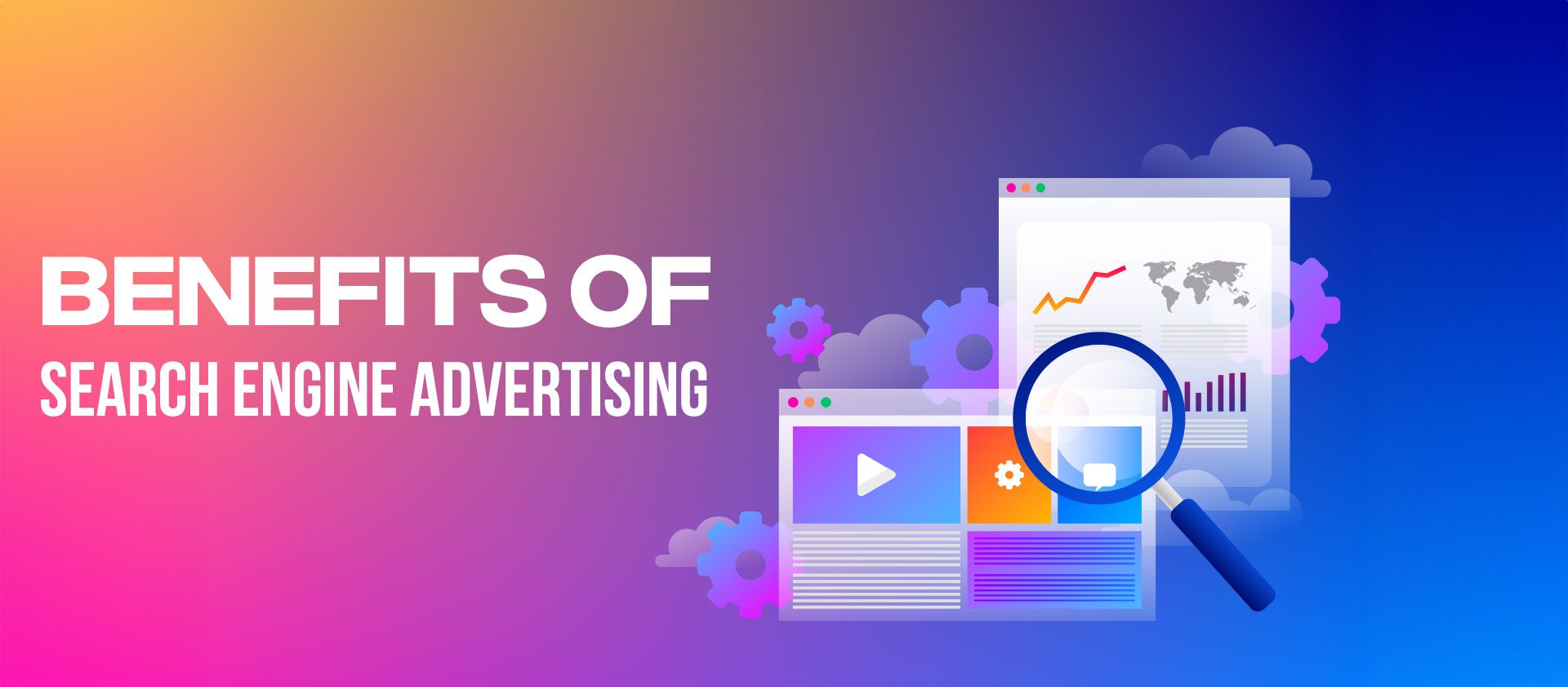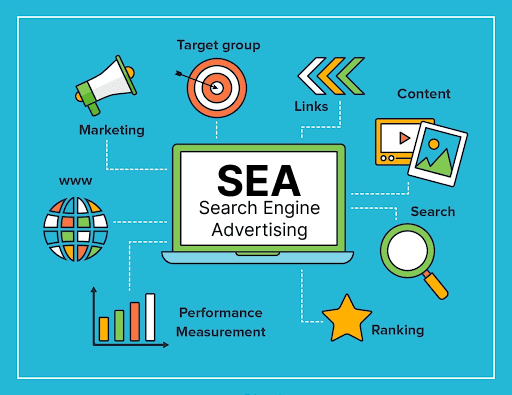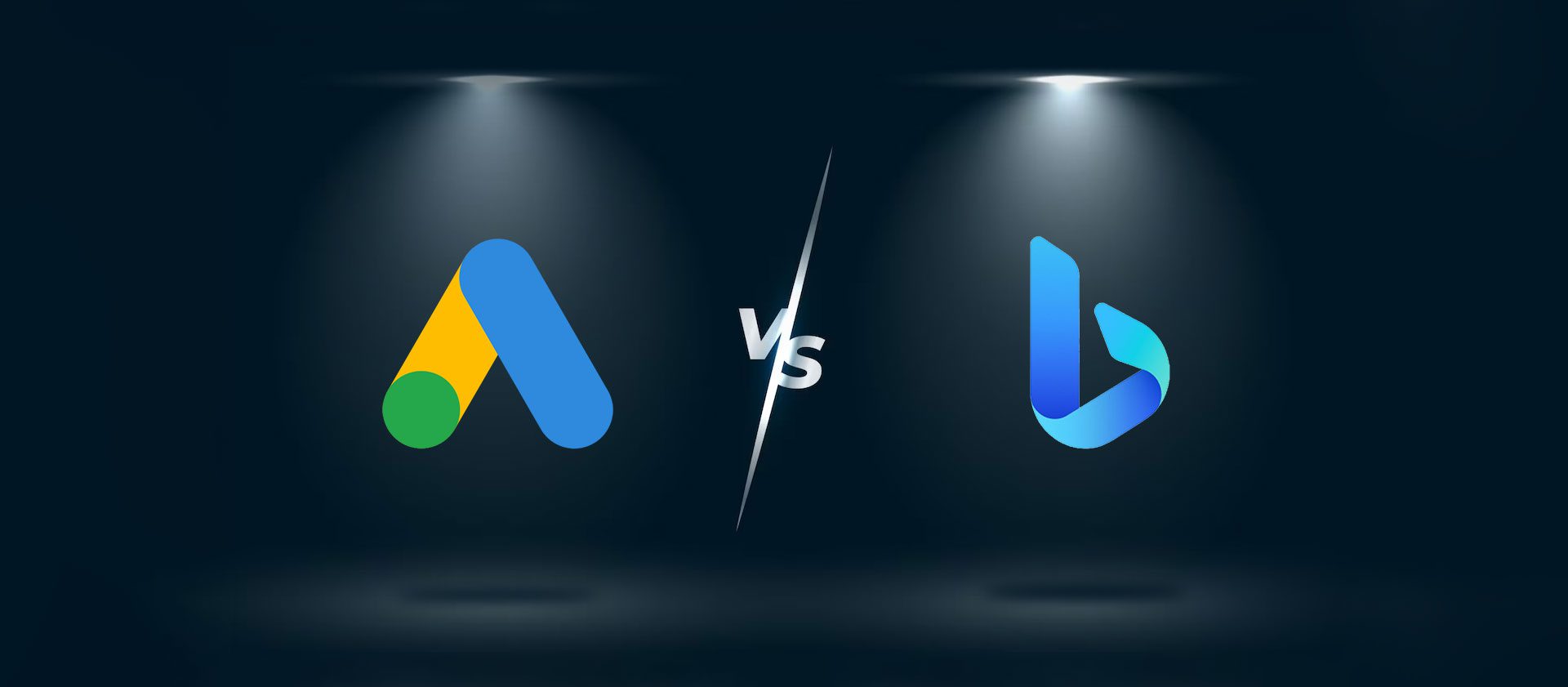SEA Search engine advertising has become an essential tool for businesses to gain visibility, drive traffic, and ultimately boost conversions. With millions of websites competing for attention, it is crucial to understand the art behind this powerful marketing strategy. In this guide, we will delve into the intricacies of search engine advertising, exploring how to effectively navigate platforms like Google Ads and Bing Ads to maximize your return on investment. From crafting compelling ad copy to targeting the right keywords and optimizing landing pages, we will walk you through the step-by-step process of creating successful search engine ad campaigns.
Whether you are a seasoned marketer looking to refine your skills or a business owner eager to tap into the potential of SEA digital marketing, this guide will provide you with the knowledge and techniques needed to drive targeted traffic and skyrocket your conversions. Get ready to unlock the true power of search engine advertising and take your online presence to new heights.
Understanding the basics of search engine advertising
SEA search engine advertising, also known as paid search or pay-per-click (PPC) advertising, is a form of online advertising that allows businesses to bid on keywords related to their products or services. When a user searches for those keywords on a search engine, the ads appear at the top or bottom of the search results page. The advertiser only pays when someone clicks on their ad, hence the name “pay-per-click.”
One of the key benefits of search engine advertising is its ability to target specific audiences. By selecting the right keywords and demographics, businesses can ensure that their ads are shown to people who are most likely to be interested in their offerings. This targeted approach not only increases the chances of attracting qualified leads but also helps to optimize ad spend.
However, it’s important to note that SEA digital marketing is a highly competitive landscape. To stand out from the crowd, businesses need to create compelling ad copy, choose the right keywords, and optimize their landing pages for conversions. In the next sections, we will explore these aspects in more detail.
Benefits of Search Engine Advertising

Search engine advertising offers several benefits that make it an attractive marketing strategy for businesses of all sizes.
First and foremost, it provides instant visibility. Unlike organic search, where it may take time to rank on the first page, search engine advertising allows businesses to appear at the top of the search results almost immediately. This instant visibility can be especially beneficial for new businesses or those launching new products or services.
Secondly, search engine advertising allows businesses to target specific audiences. With advanced targeting options, advertisers can choose the demographics, locations, and even the time of day when their ads are shown. This level of control ensures that the ads reach the right people at the right time, maximizing the chances of driving conversions.
Another advantage of search engine advertising is the ability to track and measure results. With comprehensive analytics and reporting tools, businesses can easily monitor the performance of their ad campaigns. This data provides valuable insights into which ads and keywords are driving the most traffic and conversions, allowing advertisers to optimize their campaigns for better results.
Key metrics to measure the success of search engine advertising campaigns
Measuring the success of SEA marketing campaigns is crucial to understanding the return on investment and making informed decisions for optimization. Here are some key metrics to consider:
- Click-Through Rate (CTR): This metric measures the percentage of people who click on your ad after seeing it. A high CTR indicates that your ad is relevant and compelling to the target audience. Aim for a CTR above the industry average to ensure your ads are effectively attracting clicks.
- Conversion Rate: The conversion rate measures the percentage of people who take the desired action after clicking on your ad. This action could be making a purchase, filling out a form, or subscribing to a newsletter. A high conversion rate indicates that your landing page and ad copy are effectively persuading users to take action.
- Cost Per Conversion (CPC): This metric calculates the average cost of acquiring a single conversion. By tracking the CPC, you can determine the efficiency of your ad spend. Aim for a low CPC to maximize your budget and ensure a positive return on investment.
- Return on Ad Spend (ROAS): ROAS measures the revenue generated for every dollar spent on advertising. It gives you an idea of how effective your ad campaigns are in driving revenue. A high ROAS indicates that your campaigns are profitable, while a low ROAS may require adjustments in targeting, ad copy, or landing page optimization.
- Quality Score: Quality Score is a metric used by search engines to measure the relevance and quality of your ads and keywords. It considers factors such as click-through rate, ad relevance, and landing page experience. A high-quality score can lower your cost per click and improve your ad positioning.
By regularly monitoring these metrics and making data-driven optimizations, you can ensure that your search engine advertising campaigns are delivering the desired results and maximizing your return on investment.
Creating Effective Search Engine Advertising Campaigns

Creating effective search engine advertising campaigns requires careful planning and execution. Here are the key steps involved:
- Keyword research and selection for search engine advertising
Keyword research is the foundation of any successful SEA digital marketing campaign. Start by brainstorming a list of relevant keywords that your target audience is likely to search for. Use keyword research tools like Google Keyword Planner or SEMrush to expand your list and identify high-volume, low-competition keywords.
Next, prioritize your keywords based on relevance and search volume. Focus on long-tail keywords that are more specific and have higher intent. These keywords often convert better and have lower competition, allowing you to get more value from your ad spend.
- Writing compelling ad copy for search engine advertising
Crafting compelling ad copy is essential to grab the attention of potential customers and entice them to click on your ads. Keep the following tips in mind:
– Include a strong call-to-action (CTA) that encourages users to take the desired action.
– Highlight the unique selling points of your product or service to differentiate yourself from competitors.
– Use language that resonates with your target audience and addresses their pain points.
– Test different ad variations to see which ones perform best and iterate based on the results.
- Optimizing landing pages for better conversions
Once users click on your ads, it’s crucial to provide them with a seamless and optimized landing page experience. Here are some best practices for landing page optimization:
– Ensure that the landing page is relevant to the ad copy and keywords.
– Keep the design clean and visually appealing, with a clear focus on the call-to-action.
– Use concise and persuasive copy to highlight the benefits of your product or service.
– Include trust signals such as customer testimonials or security badges to instill confidence.
– Optimize page load speed to minimize bounce rates and improve user experience.
- Monitoring and optimizing search engine advertising campaigns
Regular monitoring and optimization are key to ensuring the success of your search engine advertising campaigns. Here’s what you should do:
– Review your campaign performance regularly, analyzing the key metrics discussed earlier.
– Identify underperforming keywords or ads and make data-driven adjustments.
– Experiment with different bidding strategies, ad placements, or targeting options to improve results.
– A/B test different variations of your ads and landing pages to identify what resonates best with your audience.
– Stay up-to-date with industry trends and changes in search engine advertising platforms to adapt your strategies accordingly.
By continuously refining your campaigns based on data and insights, you can optimize your search engine advertising efforts and drive even better results.
Advanced strategies for search engine advertising
Once you have mastered the basics of search engine advertising, you can explore advanced strategies to further enhance your campaigns. Here are a few techniques to consider:
- Remarketing: Remarketing allows you to target users who have previously visited your website or interacted with your ads. By showing tailored ads to these users, you can increase brand recall and encourage them to convert.
- Ad extensions: Ad extensions provide additional information and links within your ads, making them more informative and compelling. Utilize extensions like sitelinks, call extensions, or review extensions to enhance the visibility and effectiveness of your ads.
- Audience targeting: In addition to keyword targeting, consider leveraging audience targeting options to reach specific groups of users. This includes demographic targeting, affinity audiences, or custom audiences based on user behavior or interests.
- Ad scheduling: Analyze the performance of your campaigns at different times of the day or week and adjust your ad scheduling accordingly. By showing your ads during peak times or when your target audience is most active, you can maximize your chances of driving conversions.
Remember to test and track the effectiveness of these advanced strategies to ensure they align with your marketing goals and provide a positive return on investment.
Tools and Resources for Search Engine Advertising

To streamline your SEA search engine advertising efforts, numerous tools and resources are available. Here are some popular ones to consider:
- Google Ads: Google Ads is the leading search engine advertising platform, offering a wide range of tools and features to manage and optimize your campaigns.
- Bing Ads: Bing Ads is Microsoft’s advertising platform, providing access to a significant portion of the search engine market. It offers similar functionalities to Google Ads and can be a valuable addition to your advertising strategy.
- SEMrush: SEMrush is a comprehensive digital marketing toolkit that includes keyword research, competitor analysis, and campaign management tools. It provides valuable insights to optimize your search engine advertising efforts.
- Google Analytics: Google Analytics is a powerful tool for tracking and analyzing website traffic and conversions. By integrating Google Analytics with your search engine advertising campaigns, you can gain deeper insights into user behavior and make informed optimization decisions.
- A/B testing tools: A/B testing tools like Optimizely or Google Optimize allow you to test different variations of your ads and landing pages to determine which ones perform best. These tools help you make data-driven decisions and improve your campaign performance.
Google Ads vs. Bing Ads: Which Platform Should Your Business Invest In?

Google Ads and Bing Ads have emerged as the top contenders in the world of online advertising. Both platforms offer unique features and benefits that can help drive traffic and boost sales. However, choosing the right platform that aligns with your business goals and target audience can be a daunting task. That’s why we’re here to help! In this article, we will compare and contrast Google Ads and Bing Ads, giving you all the information you need to make an informed decision. Whether you’re a small business owner or a marketing professional, understanding the strengths and weaknesses of each platform will empower you to maximize your advertising budget and achieve your desired results. So, let’s dive in and discover which advertising platform is the perfect fit for your business!
Key Differences between Google Ads and Bing Ads
When it comes to advertising platforms, Google Ads and Bing Ads have distinct differences. The first major difference lies in their search engine market share. Google is the undisputed leader, with over 90% of the global search market share, while Bing holds around 3%. This means that Google Ads has the potential to reach a larger audience, but Bing Ads shouldn’t be overlooked, especially if your target audience aligns with Bing’s user demographic.
Another significant difference is the cost per click (CPC). Google Ads generally has higher CPCs compared to Bing Ads. This is because Google’s larger user base and higher competition drive up the bid prices. However, it’s important to note that while Bing Ads may have lower CPCs, they also have lower search volumes. Therefore, you need to carefully consider your budget and target audience when deciding which platform to invest in.
In terms of ad formats, Google Ads offers a wide range of options, including text ads, display ads, video ads, shopping ads, and app promotions. Bing Ads, on the other hand, has fewer ad formats available. While they offer text ads, display ads, and shopping ads, they don’t have video or app promotion options. Therefore, if your business heavily relies on video or app promotion, Google Ads might be the better choice for you.
Target Audience and Market Share of Google Ads and Bing Ads

Understanding your target audience is crucial when deciding which platform to invest in. As mentioned earlier, Google dominates the search engine market, making it a go-to platform for businesses looking to reach a broader audience. Google’s users tend to be tech-savvy, younger, and more diverse. If your product or service caters to this demographic, Google Ads is likely to yield better results.
Bing Ads, on the other hand, attracts a slightly older and more affluent audience. Their users are often more focused on shopping and have a higher average income. If your business caters to an older or more specific demographic, Bing Ads can offer a more targeted approach. Additionally, Bing Ads can be particularly effective for businesses in niche industries where there is less competition.
It’s worth noting that while Google Ads has a larger market share, Bing Ads can still be a valuable platform. Bing’s integration with Microsoft products, such as Windows and Office, means that their ads reach users across various devices and platforms. This can be advantageous if your target audience heavily uses Microsoft products.
Cost and Budget Considerations
One of the most important factors to consider when choosing a SEA search engine advertising platform is your budget. As mentioned earlier, Google Ads generally has higher CPCs compared to Bing Ads. This means that if you have a limited budget, Bing Ads might be a more cost-effective option. With lower CPCs, you can potentially achieve more clicks and conversions for the same budget.
However, it’s essential to consider the search volume and potential reach of each platform. Google’s massive user base means that even with higher CPCs, you have the potential to reach a significantly larger audience. This can translate into more conversions and a higher return on investment (ROI). So, while Bing Ads may have lower CPCs, you need to evaluate whether the trade-off in reach is worth it for your business.
Another cost consideration is competition. Due to Google’s larger user base and higher competition, bidding for keywords can become more expensive. This can make it challenging for smaller businesses with limited budgets to compete effectively. On the other hand, Bing Ads has less competition, giving smaller businesses a better chance to rank higher and reach their target audience without breaking the bank.
Ad Formats and Features
The ad formats and features offered by each platform are essential factors to consider when deciding between Google Ads and Bing Ads. Google Ads provides a wide range of ad formats, allowing you to create engaging and visually appealing ads. Text ads are the most common form of advertising on Google, but they also offer display ads, video ads, shopping ads, and app promotions.
Display ads on Google Ads can help you reach a wider audience by displaying your ads on relevant websites across the internet. Video ads are ideal for businesses looking to capture the attention of users on platforms like YouTube. Shopping ads allow e-commerce businesses to showcase their products directly in search results. Lastly, app promotion ads help drive downloads and engagement for mobile apps.
On the other hand, Bing Ads offers text ads, display ads, and shopping ads. While they may have fewer options compared to Google Ads, these formats can still be highly effective. Bing Ads’ text ads are similar to Google’s, appearing at the top or side of search results. Display ads on Bing can help you reach your target audience on partner websites, while shopping ads allow you to showcase your products directly within Bing search results.
Keyword Research and Match Types
Keyword research is a critical aspect of any pay-per-click (PPC) SEA marketing campaign. Both Google Ads and Bing Ads offer keyword planning tools that can help you identify relevant keywords for your business. However, there are some differences in the way they handle match types.
Google Ads offers a range of match types, including broad match, broad match modifier, phrase match, and exact match. Broad match allows your ad to appear for variations of your keywords, while broad match modifier gives you more control over which variations trigger your ads. Phrase match ensures that your ad appears when the search query includes your keyword phrase, while exact match ensures that your ad only appears when the search query exactly matches your keyword.
Bing Ads also offers similar match types, such as broad match, broad match modifier, phrase match, and exact match. However, it’s worth noting that Bing’s exact match is not as strict as Google’s. This means that your ad may still appear for variations of your keyword, even with the exact match setting. Therefore, it’s important to monitor your campaigns closely and adjust your match types accordingly to ensure your ads are being shown to the right audience.
Ad Placement and Ad Extensions
Ad placement plays a crucial role in the success of your advertising campaigns. Both Google Ads and Bing Ads offer various options for ad placement, allowing you to reach your target audience at different stages of their online journey.
Google Ads’ ad placement options include search network, display network, video network, and app network. The search network displays your ads on Google search results pages, while the display network shows your ads on relevant websites across the internet. The video network allows your ads to be displayed on YouTube and other video platforms, while the app network promotes your app across various mobile apps.
Bing Ads also provides ad placement options, including search network and syndicated search partners. The search network displays your ads on Bing search results pages, while syndicated search partners extend your reach by displaying your ads on partner websites.
Both platforms also offer ad extensions, which enhance your ads and provide additional information to users. Google Ads offers a wide range of ad extensions, including sitelink extensions, call extensions, location extensions, and review extensions. These extensions help make your ads more prominent and increase the chances of users clicking on them.
Bing Ads also offers ad extensions, such as sitelink extensions, call extensions, location extensions, and review extensions. While Bing’s ad extensions may not be as extensive as Google’s, they still provide valuable additional information to users and can improve the performance of your ads.
Conversion Tracking and Analytics
Tracking conversions and analyzing campaign performance is crucial for optimizing your advertising efforts. Both Google Ads and Bing Ads offer conversion tracking and analytics tools to help you measure the success of your campaigns.
Google Ads provides a robust set of conversion tracking options, allowing you to track various actions, such as form submissions, purchases, and phone calls. Their analytics tool, Google Analytics, provides in-depth insights into your website’s performance, allowing you to analyze user behavior and make data-driven decisions.
Bing Ads also offers conversion tracking capabilities, allowing you to track actions such as purchases and form submissions. Their analytics tool, Bing Webmaster Tools, provides data on keyword performance, search queries, and user demographics. While Bing’s analytics may not be as comprehensive as Google’s, they still offer valuable insights that can help you optimize your SEA digital marketing campaigns.
Choosing the Right Platform for Your Business
Choosing the right advertising platform for your business ultimately depends on your unique goals, target audience, and budget. Here are a few key points to consider when making your decision:
- Target audience: Evaluate the demographic and preferences of your target audience. Consider which platform aligns better with their characteristics and behaviors.
- Budget: Determine your advertising budget and assess the potential reach and cost per click on each platform. Consider whether the trade-offs in reach and competition are worth it for your business.
- Ad formats and features: Determine which ad formats and features are essential for your business. Consider whether Google Ads’ extensive options or Bing Ads’ more streamlined approach better aligns with your advertising goals.
- Keyword research and match types: Consider the importance of keyword targeting and the match types offered by each platform. Evaluate the level of control and precision you require for your campaigns.
- Ad placement and ad extensions: Assess the placement options and ad extensions available on each platform. Consider which options can help you reach your target audience effectively and provide additional information to users.
- Conversion tracking and analytics: Evaluate the tracking and analytics capabilities of each platform. Consider which tools provide the insights and data you need to optimize your campaigns and measure success.
By carefully considering these factors, you can make an informed decision on whether to invest in Google Ads, Bing Ads, or even both platforms to maximize your online advertising efforts.
Invest in Search Engine Advertising with Foreignerds Digital Marketing Agency
SEA Search engine advertising offers businesses a powerful way to drive targeted traffic and boost conversions. By understanding the basics, measuring key metrics, and implementing effective strategies, you can tap into the true potential of search engine advertising.
Google Ads and Bing Ads offer unique features and benefits that can help businesses drive traffic and boost sales. Understanding the differences between the two platforms is crucial for making an informed decision on where to invest your advertising budget. While Google Ads dominates the search engine market and offers extensive ad formats and features, Bing Ads can provide a more cost-effective option with a targeted audience.
By evaluating your business goals, target audience, and budget, you can choose the platform that aligns best with your specific needs. So, whether you’re targeting a broad audience or a niche market, Google Ads and Bing Ads can both be powerful tools to help you achieve your advertising goals with Foreignerds digital marketing agency. Foreignerds is a leading digital marketing agency in USA that has helped various businesses achieve their goals of achieving digital marketing.
Continuously monitor and optimize your campaigns, keeping up with industry trends and leveraging advanced techniques. With the right tools and resources at your disposal, you can take your online presence to new heights and achieve remarkable results. So, embrace the art of search engine advertising with Foreignerds and unlock the door to success in the digital landscape. Let’s talk and discuss!